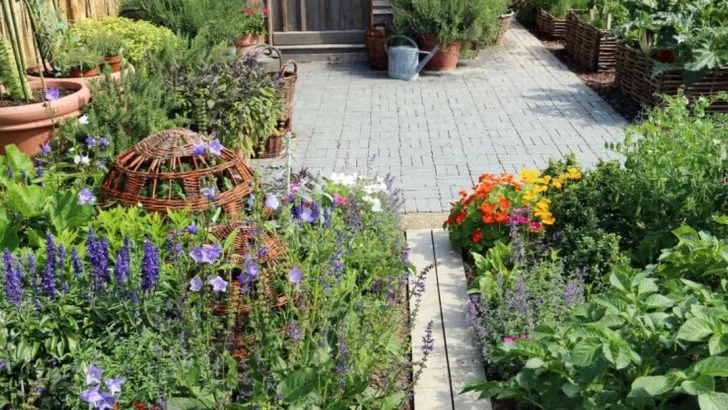Edible landscaping is a brilliant way to blend beauty with functionality in your garden. Imagine a space where vibrant fruits, vegetables, and herbs are seamlessly integrated into your landscape, offering both eye-catching appeal and a bounty of fresh produce. In this article, we’ll share 21 creative edible landscaping ideas that show you how to grow food beautifully while transforming your yard into a deliciously attractive oasis.
Fruit Trees
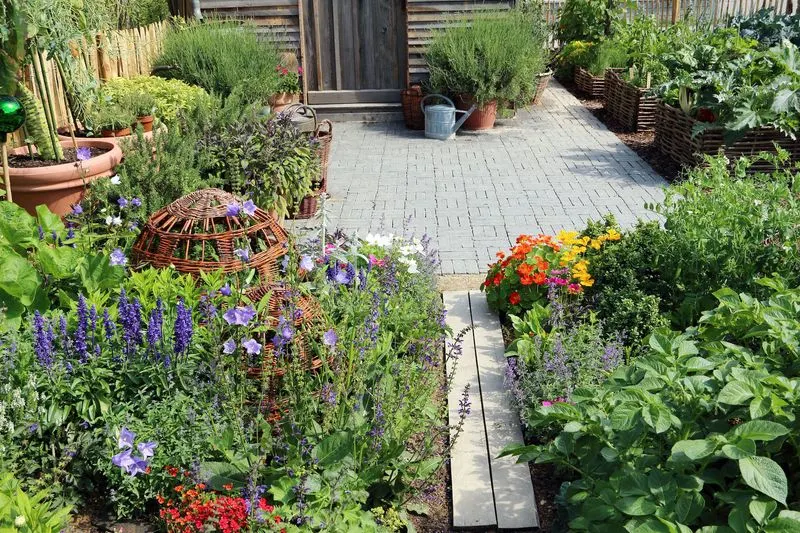
Fruit trees like apple, pear, and cherry offer stunning spring blossoms, summer shade, and delicious harvests. Position them as focal points in your garden. Combine different varieties to extend the fruiting season and enjoy a continuous supply of fresh produce. These trees not only provide food but also create habitats for birds and beneficial insects. Choose dwarf or semi-dwarf varieties for smaller spaces, and remember to prune them regularly for optimal health and productivity. With proper care, fruit trees are a long-term investment that will reward you year after year.
Herb Spiral

A herb spiral maximizes space and creates a microclimate for diverse herbs. Construct it by stacking soil and rocks in a spiral, allowing for various sun exposures and moisture levels. Plant sun-loving herbs like rosemary and thyme at the top, and moisture-loving ones like mint and parsley at the bottom. This design not only saves space but also adds an eye-catching element to any garden. Harvest fresh herbs year-round for culinary uses, ensuring your dishes are always seasoned to perfection. Regularly trim the herbs to encourage bushy growth and prevent them from overshadowing each other.
Vegetable Borders
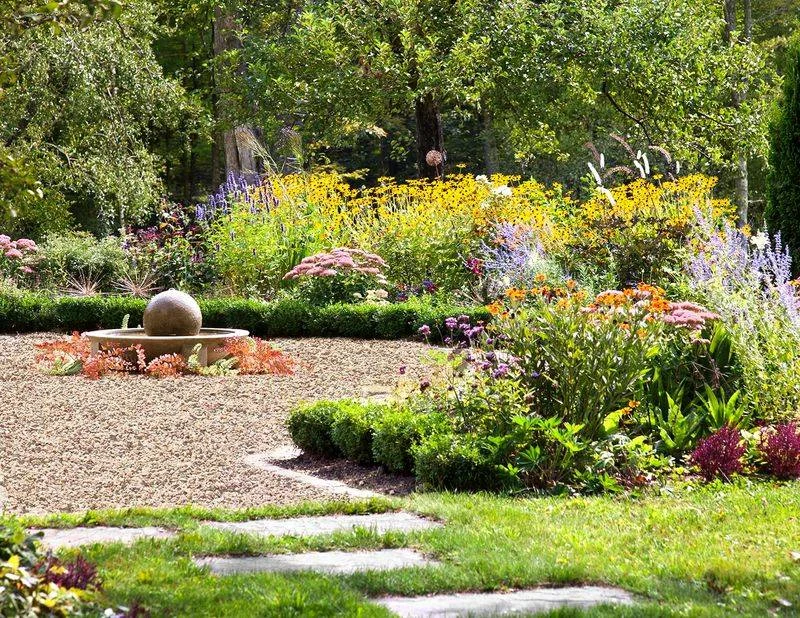
Use vegetables as borders to define garden areas and add structure. Opt for colorful varieties like rainbow chard, purple cabbage, and bright peppers to enhance visual interest. These borders are not only decorative but also functional, providing fresh produce right at your fingertips. Companion planting with flowers like marigolds can help deter pests and attract beneficial insects, promoting a healthy ecosystem. Regular harvesting keeps the plants productive and maintains the border’s tidy appearance. Rotate crops annually to preserve soil fertility and prevent disease build-up.
Berry Bushes
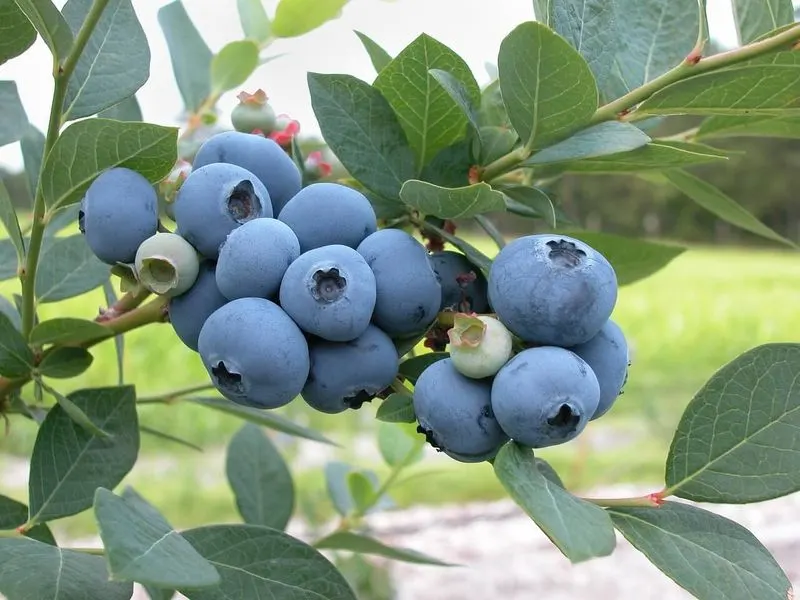
Berry bushes such as blueberries, raspberries, and blackberries are perfect for adding height and texture to your garden. They offer a bounty of sweet, juicy fruits that are a hit with both people and wildlife. Incorporate them into hedges or along fences to create living barriers that are both practical and delicious. These bushes thrive in well-drained soil and sunny locations. Prune them annually to remove old canes and promote new growth. With the right care, berry bushes can provide a plentiful harvest every summer, making your garden not only beautiful but also bountiful.
Edible Groundcovers
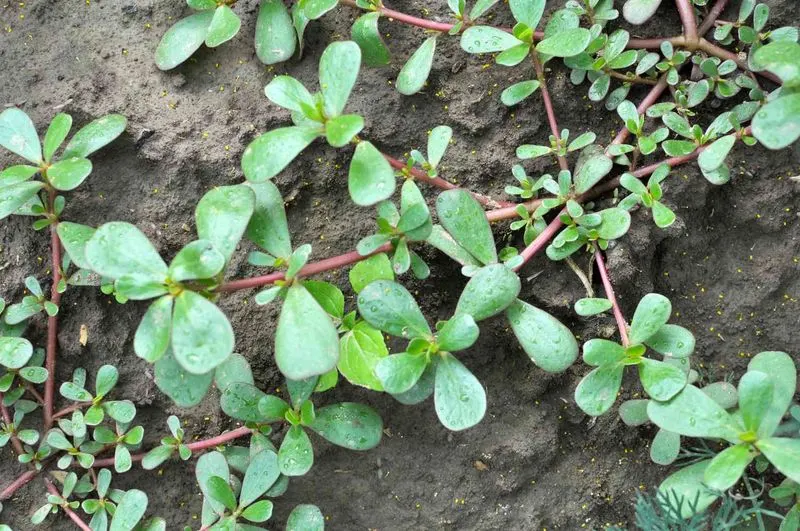
Edible groundcovers like strawberries and creeping thyme offer greenery and ground protection while producing delicious fruits and herbs. These low-maintenance plants suppress weeds and reduce soil erosion, making them ideal for filling gaps between stepping stones or at the base of shrubs. Strawberries provide sweet red fruits, while thyme adds aromatic flavor to dishes. Allow these groundcovers to spread naturally, creating a dense carpet of edible greenery. Regularly harvest fruits and trim the plants to keep them healthy and contained. Their practical benefits and aesthetic appeal make them a smart choice for any garden.
Nut Trees
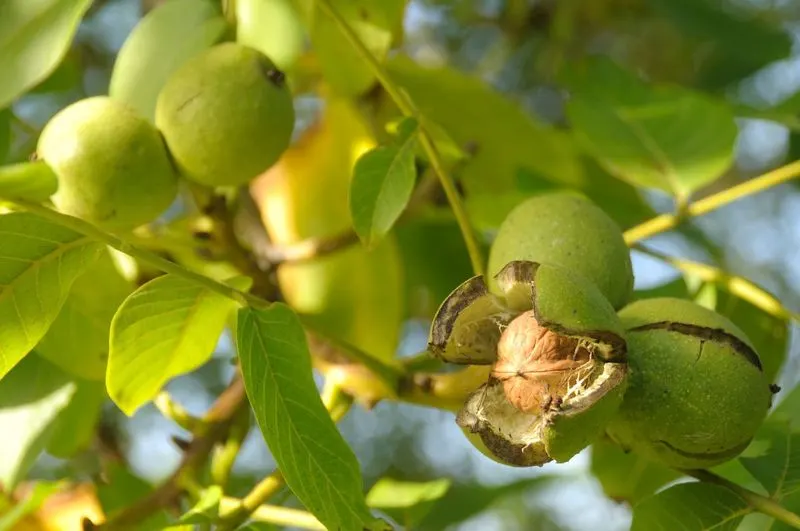
Nut trees like walnut and hazelnut are majestic additions to any landscape, providing shade and a plentiful harvest. These trees can become the centerpiece of your garden, offering both beauty and sustenance. Nut trees require space to grow and thrive, making them suitable for larger gardens. Ensure they are planted in well-drained soil and receive full sun. Regular pruning helps maintain their shape and encourages productive nut-bearing. Over time, these trees will provide a steady supply of nutritious nuts, enhancing your garden’s yield and your pantry’s offerings. Patience and care will be greatly rewarded.
Vine Trellises
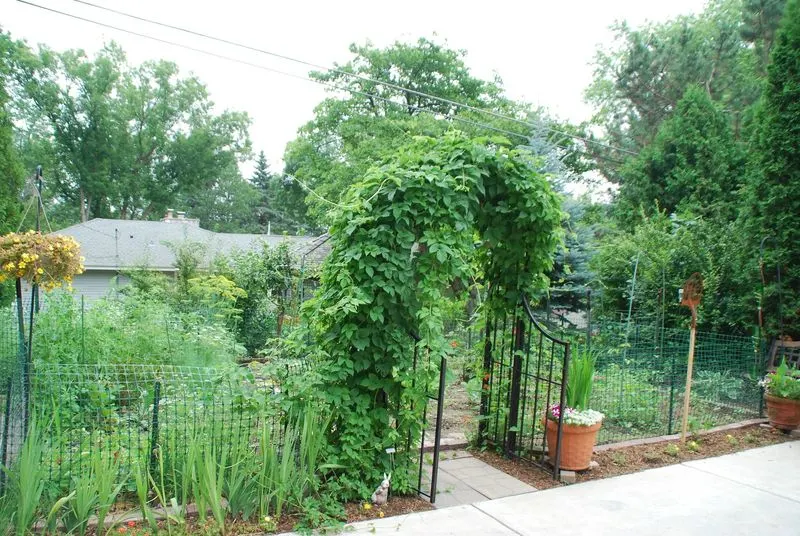
Vertical gardening with vine trellises saves space and adds vertical interest. Support climbing plants like grapevines and passionfruit on sturdy trellises or pergolas. This setup not only beautifies vertical surfaces but also yields delicious fruits. Ensure the vines are well-supported and regularly pruned to manage growth and increase fruit production. A well-placed trellis can also create shaded areas, providing relief from the sun on hot days. With diligent care, vine-covered trellises become striking features in your landscape, combining function with form in an elegant display.
Edible Flowers

Edible flowers such as nasturtiums, violas, and borage add bursts of color and flavor to your garden and kitchen. Not only are these blooms visually stunning, but they also offer unique flavors that can enhance salads, desserts, and drinks. Plant them in clusters for maximum impact, creating vibrant patches that attract pollinators. Regularly deadhead these flowers to prolong blooming and encourage new growth. This practice ensures a continuous display of color and a steady supply of edible petals, making your garden both beautiful and functional throughout the growing season.
Tea Garden
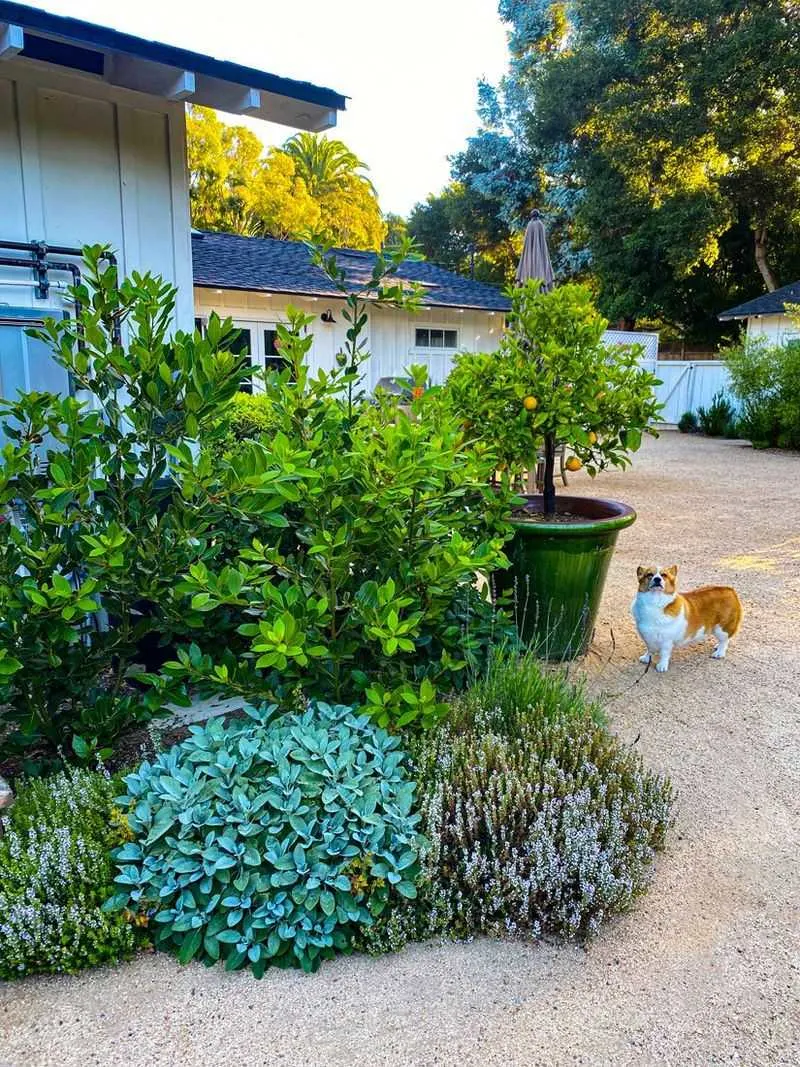
Crafting a tea garden with herbs like mint, chamomile, and lemon balm creates a serene space for relaxation and refreshment. These herbs thrive in sunny spots and can be grown in pots or directly in the ground. Their fragrant leaves invite you to brew fresh, aromatic teas right from your garden. Arrange them near a seating area to enjoy a peaceful tea time amidst nature. Regularly harvesting the leaves not only provides fresh tea ingredients but also encourages more robust plant growth. A tea garden enriches your landscape with both beauty and functionality.
Edible Hedges
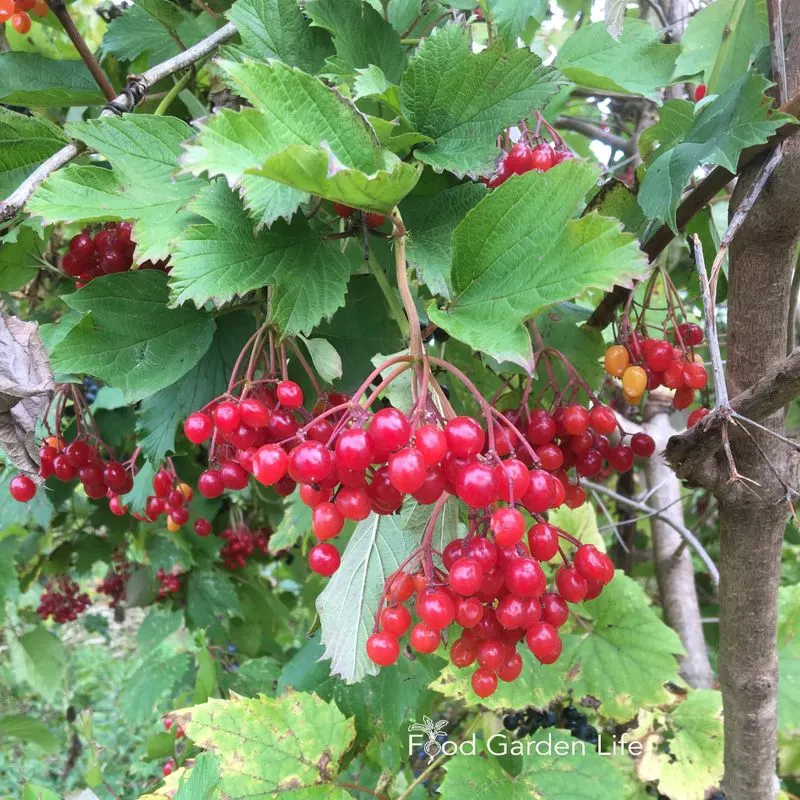
Edible hedges, formed from plants like rosemary and lavender, offer privacy while producing aromatic herbs. These dual-purpose hedges are perfect for defining garden boundaries or creating secluded areas. They thrive in well-drained soil and require regular trimming to maintain their shape and encourage dense growth. The harvested herbs can be used in cooking or dried for later use, adding a personal touch to your culinary creations. Edible hedges combine form, function, and flavor, making them a clever addition to any garden landscape.
Container Vegetables
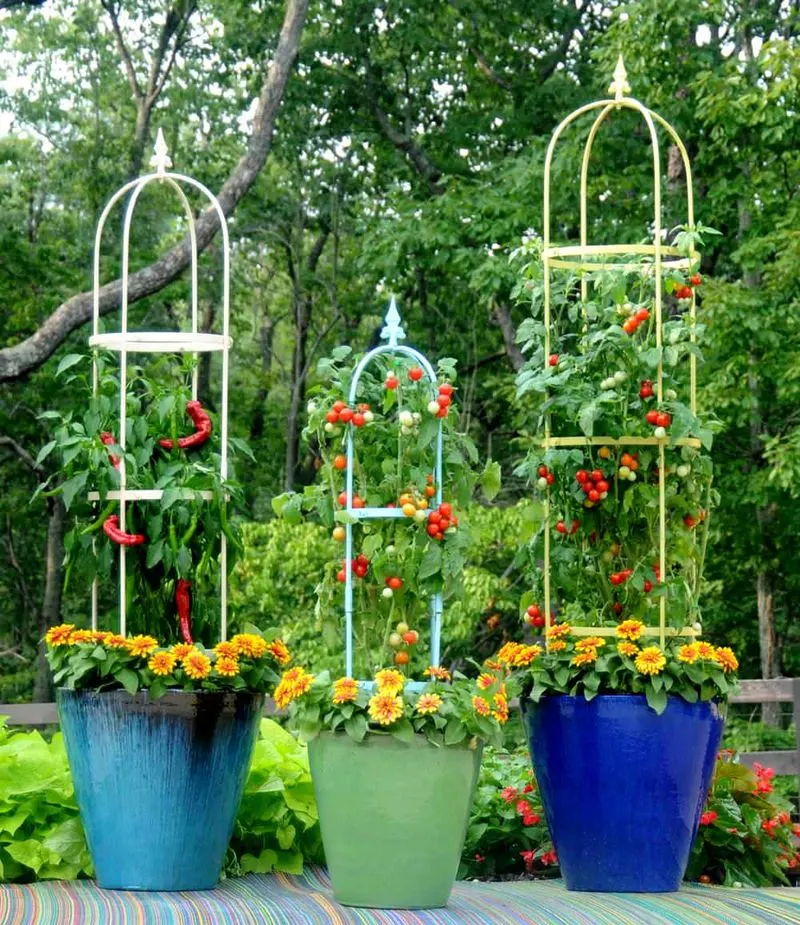
Growing vegetables in containers offers flexibility and accessibility, perfect for patios or small spaces. Containers provide controlled environments for plants like tomatoes, peppers, and herbs, ensuring optimal growth conditions. Choose pots with good drainage and position them to receive ample sunlight. This method allows for easy rotation and rearrangement, adapting to seasonal changes. Regular watering and feeding keep the plants thriving, while easy access simplifies harvesting. Container gardening is ideal for urban settings, making fresh produce available regardless of space constraints. It’s a practical way to enjoy home-grown vegetables with minimal fuss.
Culinary Vines
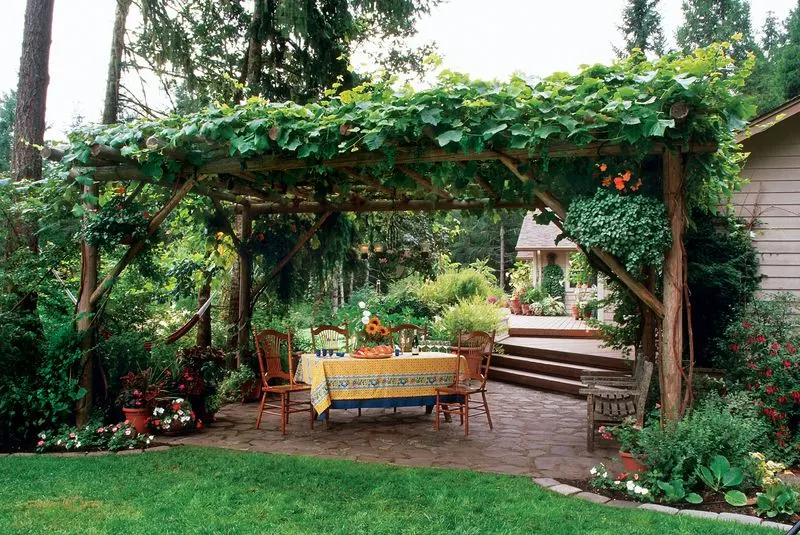
Culinary vines such as beans and peas provide vertical interest and a bountiful harvest. Train these plants to climb arches or trellises, transforming functional supports into stunning garden features. These vines are not only attractive but also productive, offering fresh ingredients for your meals. To ensure vigorous growth, provide sturdy support structures and ample sunlight. Regularly harvest the pods to encourage continuous production and prevent the plants from becoming overly mature. Culinary vines are a practical and beautiful addition to your garden, offering both aesthetic appeal and a tasty yield.
Salad Greens
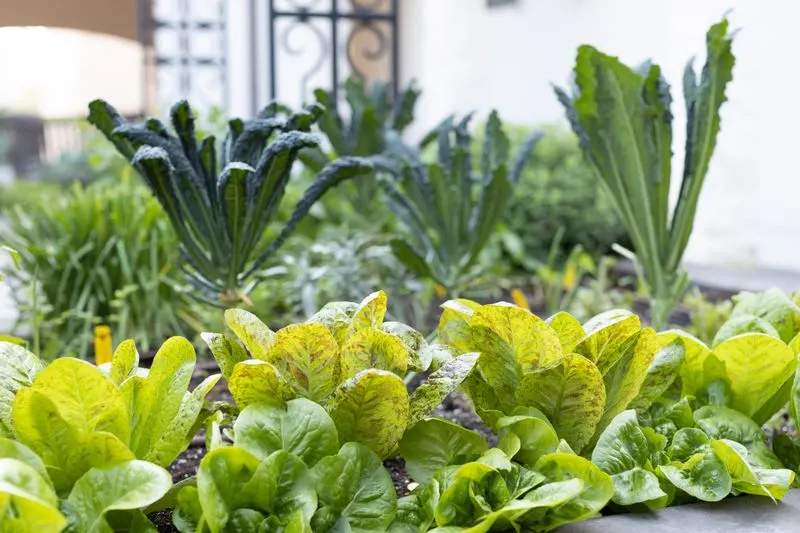
Salad greens, including arugula, spinach, and lettuce, are easy to grow and offer quick harvests. Plant them in dedicated beds or intersperse them among other plants for a vibrant tapestry of greens. These nutritious leaves thrive in cooler temperatures, making them ideal for spring and fall gardens. Regularly pick the outer leaves to encourage new growth and enjoy a continuous supply of fresh salads. Companion planting with herbs can enhance flavor and deter pests, creating a harmonious and productive garden environment. Salad greens are a must-have for any edible landscape.
Perennial Vegetables

Perennial vegetables such as asparagus and rhubarb offer long-term productivity with minimal effort. These plants return year after year, providing reliable harvests and reducing the need for replanting. Plant them in permanent spots within your garden, and they’ll thrive with little maintenance. Asparagus requires a few years to establish but rewards patience with delicious spears each spring. Rhubarb delivers tart stalks perfect for pies and jams. Mulch these plants to retain moisture and suppress weeds. Perennial vegetables enhance your garden’s sustainability while adding unique flavors to your culinary repertoire.
Pollinator-Friendly Plants
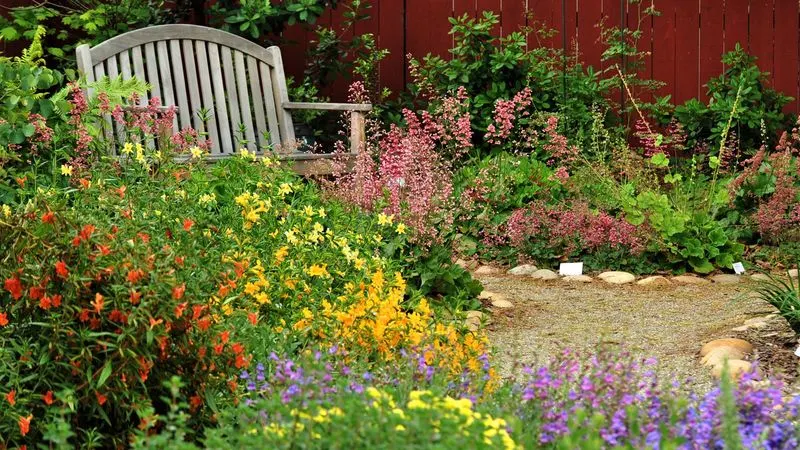
Incorporating pollinator-friendly plants such as sunflowers, lavender, and various herbs supports biodiversity and improves yields. These plants attract bees, butterflies, and other pollinators, essential for healthy garden ecosystems. Group them to create inviting habitats that encourage visits from these beneficial creatures. Not only do they enhance pollination for fruit and vegetable plants, but they also add color and movement to your garden. Regularly deadhead flowers to prolong blooming and maintain a vibrant landscape. Supporting pollinators enriches your garden’s productivity and contributes to environmental health.
Aquaponic Systems
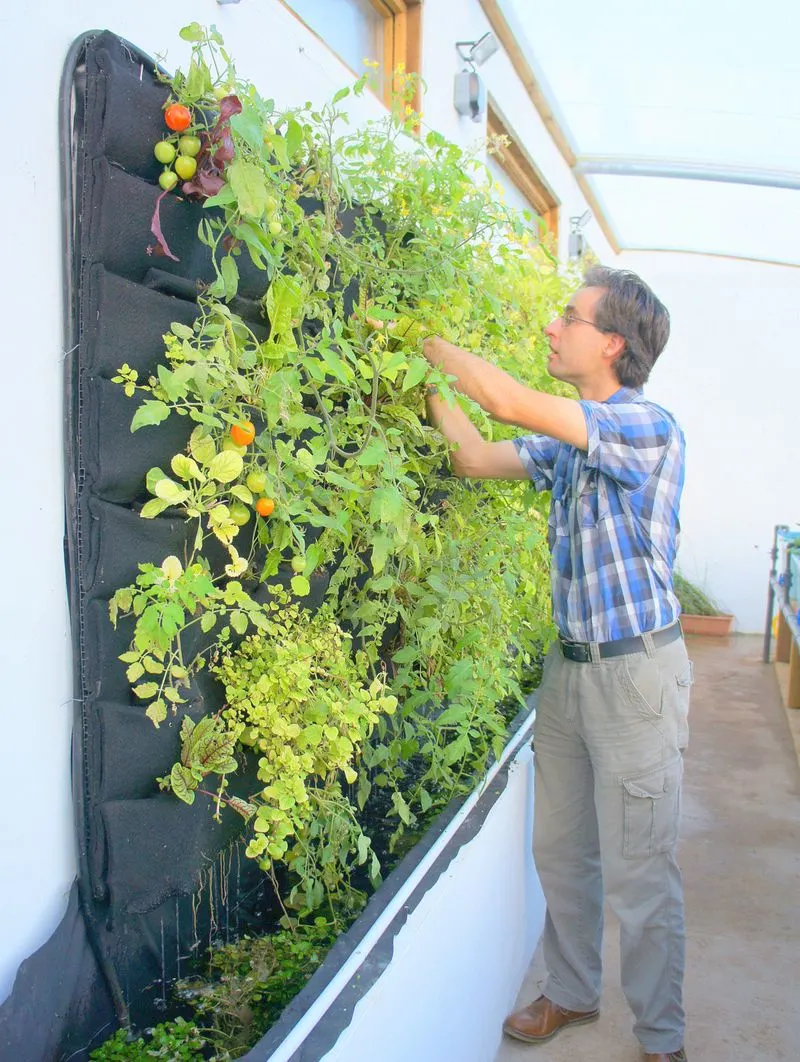
Aquaponic systems combine aquaculture and hydroponics to grow fish and plants together sustainably. Fish waste provides nutrients for plants, which in turn purify the water for the fish. This symbiotic relationship allows you to cultivate vegetables and fish in a single system, maximizing resource efficiency. Set up an aquaponic system in your backyard to enjoy fresh produce and fish year-round. Regularly monitor water quality and plant health to ensure balance. This innovative approach to gardening offers a sustainable solution for food production, merging modern technology with natural ecosystems.
Medicinal Plants
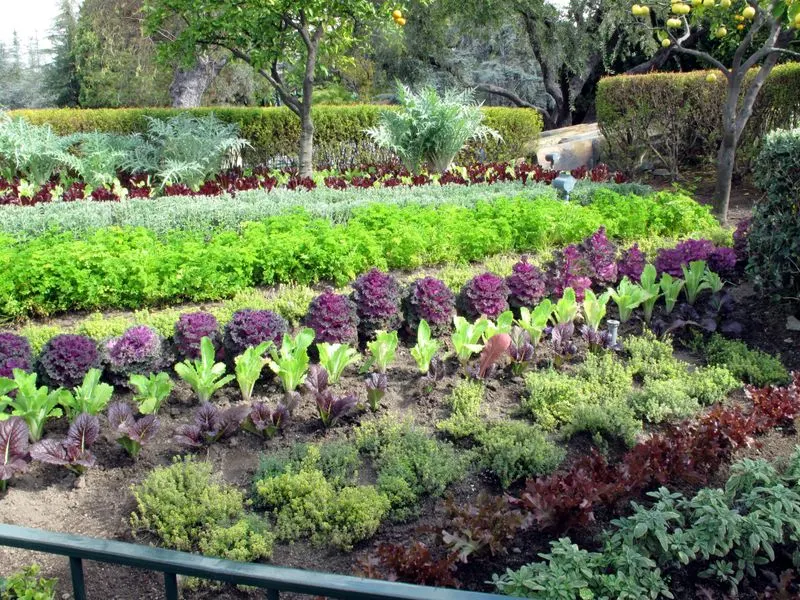
Growing medicinal plants such as aloe vera, echinacea, and calendula provides natural remedies and enhances garden diversity. These plants offer healing properties and can be used in homemade tinctures, salves, and teas. Plant them in sunny spots with well-drained soil, and they’ll thrive with minimal care. Regularly harvest the leaves and flowers for use in natural remedies, ensuring a constant supply of fresh, beneficial ingredients. Incorporating medicinal plants into your garden supports wellness and self-sufficiency, providing beauty and utility in equal measure.
Wildlife Habitats
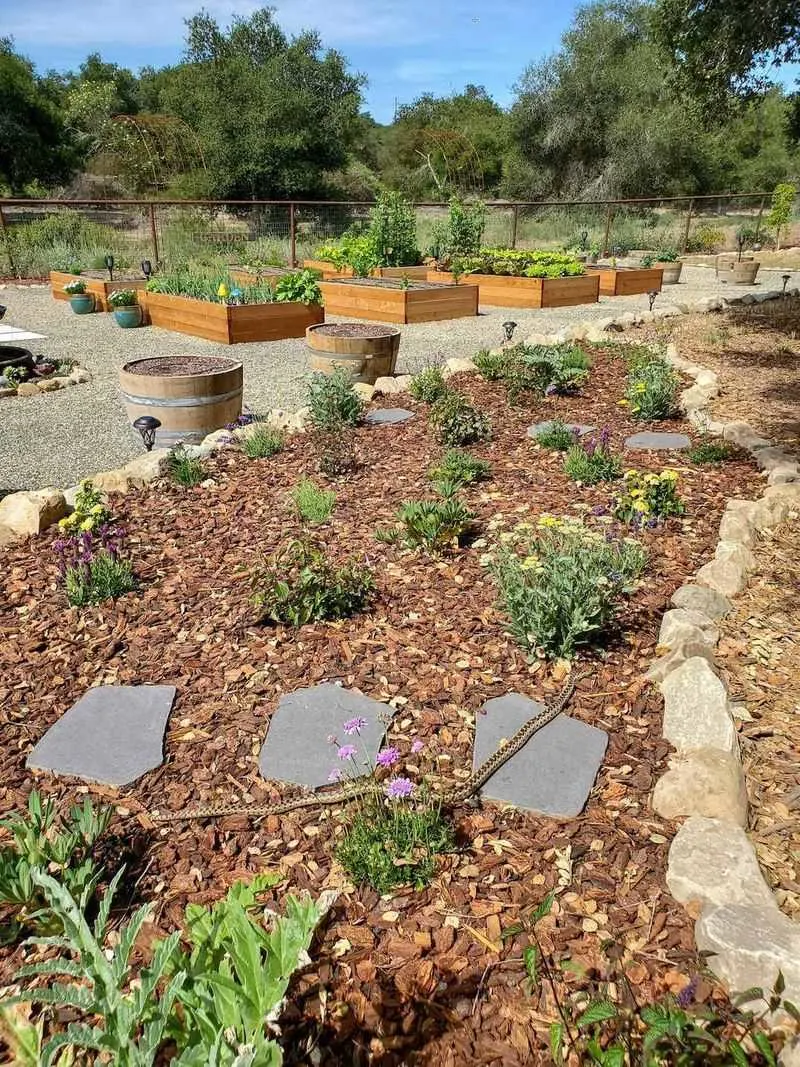
Creating wildlife habitats in your garden fosters biodiversity and ecological balance. Include elements like birdhouses, native plants, and water features to attract various species. These additions not only support local wildlife but also enhance your garden’s aesthetic and environmental value. Native plants are particularly effective, as they provide food and shelter for indigenous creatures. Regularly maintain these habitats to ensure they remain inviting and functional. By nurturing wildlife, you contribute to a healthy ecosystem while enjoying the natural beauty and sounds of thriving flora and fauna surrounding you.
Mushroom Logs
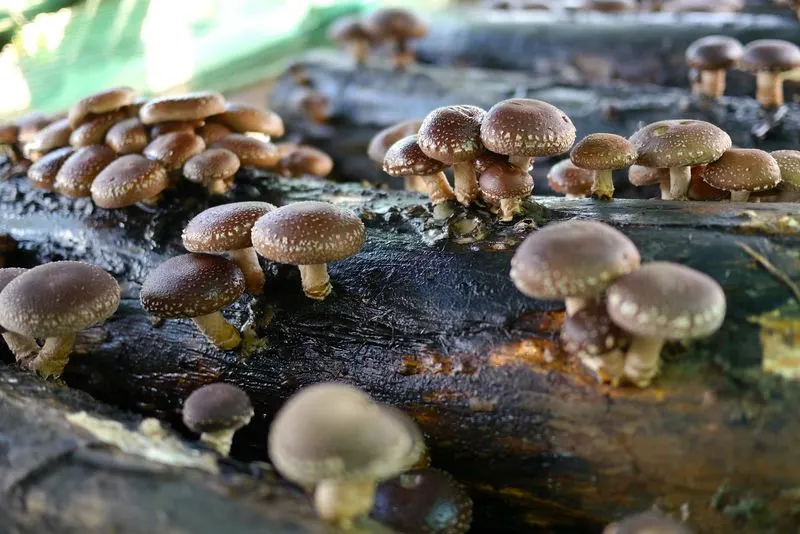
Growing mushrooms on logs is a unique way to incorporate edible fungi into your landscape. Inoculate logs with mushroom spores and place them in shaded, moist areas. Over time, these logs will yield crops of delicious mushrooms like shiitake or oyster. This method is low-maintenance and adds an intriguing element to your garden. Monitor moisture levels and keep the logs shaded to encourage steady growth. Harvest the mushrooms when mature and enjoy them in various culinary dishes. Mushroom logs are an innovative, sustainable addition to your edible landscape, providing a unique and tasty harvest.
Edible Climbing Walls
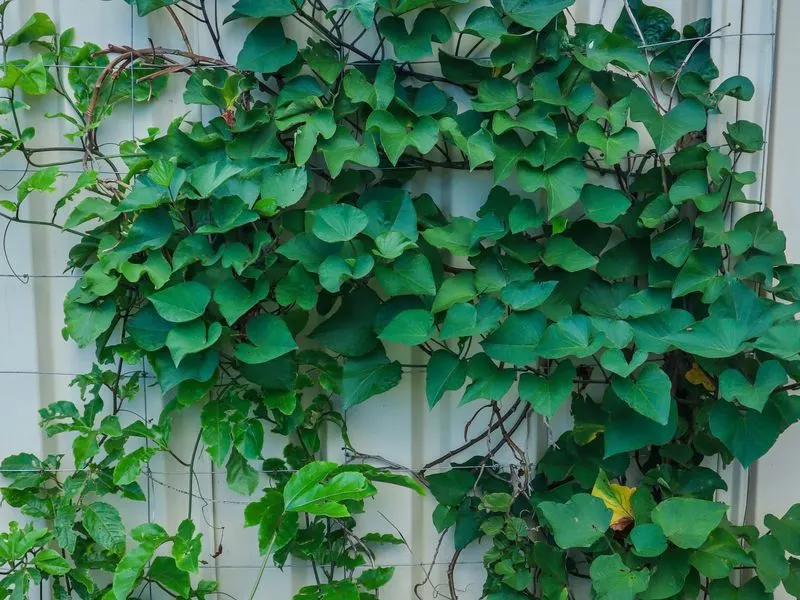
Edible climbing walls utilize vertical space to grow plants like tomatoes, cucumbers, and peas. This approach is ideal for small spaces, transforming walls into productive growing areas. Install sturdy supports and ensure the plants receive sufficient sunlight. Regular pruning and harvesting keep the plants healthy and encourage continuous production. Climbing walls not only save ground space but also create visually striking features in your garden. This method of gardening maximizes yield in limited areas, making it a practical choice for urban gardeners seeking to optimize their space and harvest.

